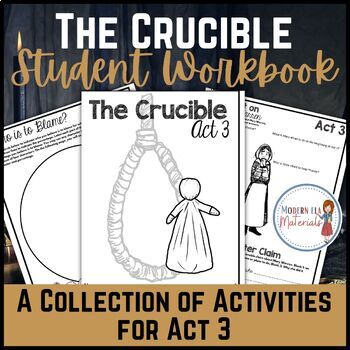Activities for Act 3 of The Crucible - Student Workbook
- Zip
Description
Keep your students wanting more while reading “The Crucible” by Arthur Miller with this collection of activities for Act 3 organized into an easy-to-use student workbook. With 6 pages of activities, this workbook has something for every student.
Best of all, these activities can be used as stand-alone activities or assembled into a student workbook. You can decide each year what works best for each group!
Built after teaching this play to students for over a decade, this workbook is exactly what you need to teach “The Crucible” to an ever-changing audience.
Here's what you'll get:
- 6 Page Student Workbook
- Answer Key
- Teacher Directions
Act 3 Includes:
- Who Holds the Power Activity
- Spotlight on Mary Warren Activity
- Character Claim Activity
- Cancel Culture Connection Activity
- Placing Blame Chart and Activity
Are you looking for resources for the whole play? You can purchase the workbook for the entire play HERE!
Are you looking for resources for the whole play? You can purchase the workbook for the entire play HERE!
Check out my other The Crucible resources in my store:
The Crucible Student Activity Workbook





